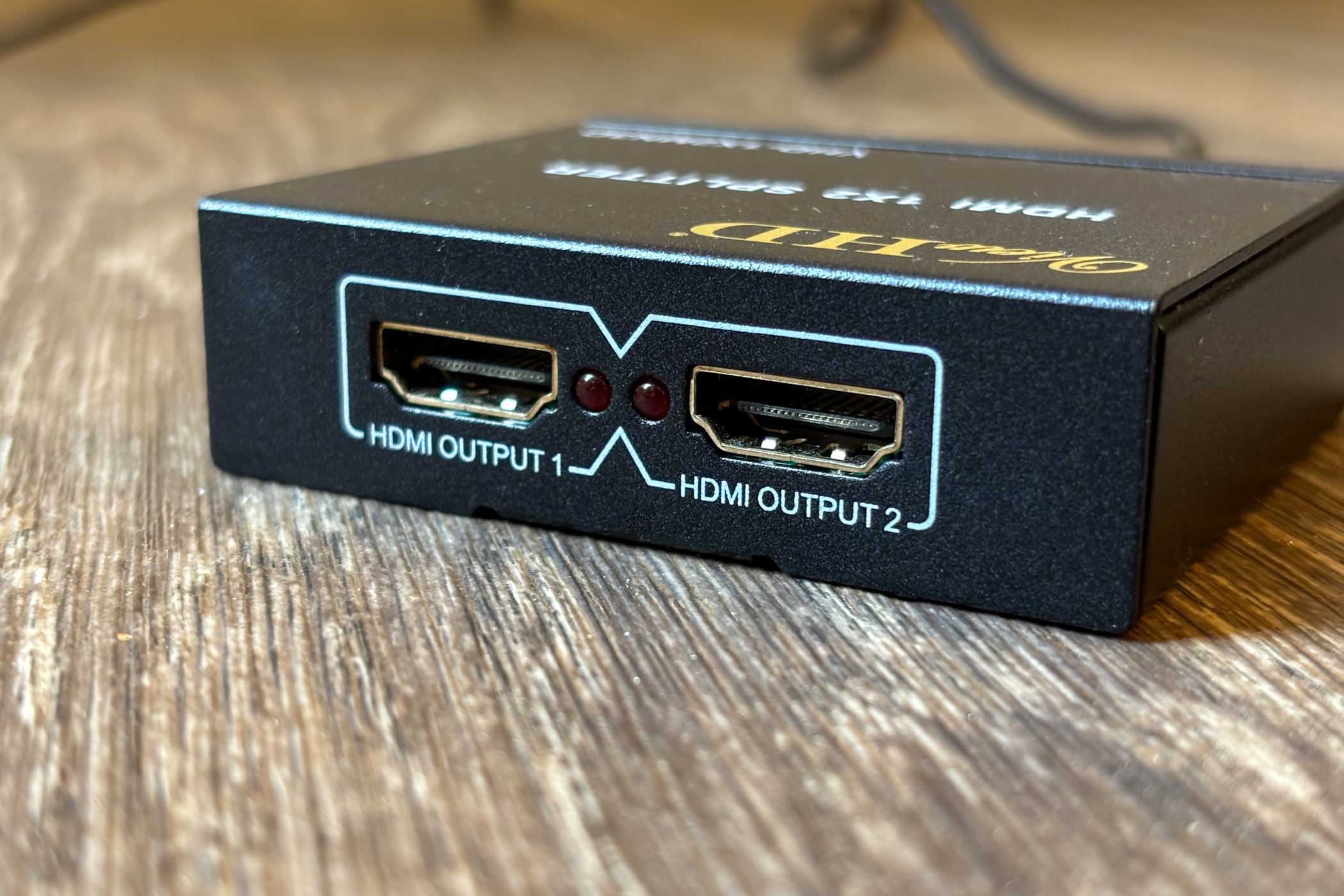Key Takeaways
- HDMI switches are used when you have multiple image sources but only one screen, allowing you to choose which source to display at any given time.
- HDMI splitters allow one source to display the same image on multiple screens simultaneously, but do not support displaying different pictures on each screen.
- KVM switches can be used as HDMI switches, though HDMI-only models are usually cheaper and more suitable for simply switching between HDMI sources.
Using HDMI ports may sometimes be not very straightforward. If you have a different number of image sources and outputs, you might end up looking for HDMI switches and splitters to solve your needs. But are they the same?
The answer is simple: they're very different devices. Below, we explain what an HDMI switch is good for, and what can be done with an HDMI splitter.
What’s an HDMI Switch?
An HDMI switch is a device that connects multiple image sources, like gaming consoles and computers, to a single HDMI port on a TV or monitor. It helps when you have more devices than screens to display them. The best TVs and even good budget monitors these days offer multiple HDMI inputs. However, if you need even more HDMI ports than what's available, a switch is the way to go.
Some HDMI switches come with their own male connectors, but usually you need to provide a good quality HDMI cable for the image sources. The switches, as the name implies, have a physical switch, so you can choose which source will be used at any given time.
What’s an HDMI Splitter?
HDMI splitters are small devices that take a single image source and display its image on two or more screens at the same time. It's the exact opposite of a switch, allowing you to use multiple screens with just one output.
While most HDMI splitters come with two ports, there are models that can be used with three or more displays.
Each time the image is divided the signal gets weaker. Therefore, if you want a splitter to use with lots of screens, you might need a model with its own power source.
Can I Use an HDMI Splitter to Extend My Desktop?
HDMI splitters only transmit the same image to all the connected screens. They can't display different images on each display they're connected to. They're intended as quick and inexpensive solutions if you only need to mirror the image to multiple TVs or monitors.
If you want to, e.g., extend the desktop of a laptop with a single HDMI port to three screens, HDMI splitters won't work, and you'll need other solutions. Many laptops have Thunderbolt ports with DisplayPort Alt Mode, or even dedicated DisplayPort outputs in addition to HDMI. If that's the case for your computer, all you need then is the corresponding cables and for the TV or monitor to have compatible ports.
If no other video port is available, USB to HDMI adapters are a good alternative. For applications where low latency isn't necessary, you may also use one of the best wireless display apps.
Are HDMI Switches and KVM Switches the Same?
KVM switches are more complex devices than HDMI switches, allowing you to display images from multiple sources on a single screen, but also using a single keyboard and a single mouse with two or more computers. That's where the name comes from: Keyboard, Video, and Mouse.
Older models used VGA or DVI as video ports, but the best KVM switches these days have HDMI connections. Similarly, PS/2 connectors used to be the port of choice for keyboards and mice, while currently USB is the norm.
Therefore, one can indeed use a KVM switch as an HDMI switch. These devices work just fine without connecting a keyboard or a mouse.
But they might not be the best option. Since KVM switches are more advanced, they also tend to be more expensive. If you're shopping for an HDMI switch, they usually cost less than a KVM one.
However, if you happen to have a KVM switch already at hand, it will do the job as well as an HDMI one, so you can use it without issues.
Switching and Splitting Is Not Dividing and Conquering
HDMI switches and HDMI splitters are both valuable tools when your devices are outnumbered. But be sure to know if it's the sources or the outputs that are in numerical disadvantage, to avoid buying an adapter that won't help you.
